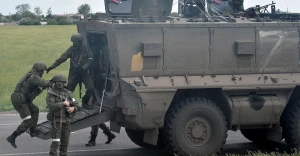
Russia escalates attacks on Ukraine amid latest U.S. statements. Serhiy Zgurets’ column
Russia’s offensive actions are partly linked to a certain diplomatic and political chaos surrounding statements from the American side. At present, the invading Russian army is trying to advance as much as possible, leveraging its advantage in manpower and equipment
Frontline situation
While European countries are deciding how, under what conditions, and with what mission they can deploy their units to Ukraine — whether in a peacekeeping or another format — the Ukrainian Defense Forces are holding back Russian troops along the entire front line. During the Munich Conference from February 14 to 16, Russia launched massive attacks across the entire front line. On Saturday, February 15, there were 291 attacks — an extremely significant number compared to the considerably lower figures in previous weeks and months.
On Sunday, February 16, the number of Russian attacks decreased by exactly half. However, both Saturday and Sunday were extremely difficult. Now we are feeling a certain inertia in Russia's actions as they attempted to break through Ukraine's defense line. I will mention specific front-line directions as well as certain events that are important and indicative.
Kursk direction
First, I will start with the Kursk region, as Russia launched massive attacks there after a certain pause when they failed to break through to Sverdlikovo. The Russians, using tanks and armored vehicles, attempted an assault under Ukraine's artillery fire in the direction of a settlement located between Mala Loknia and Sverdlikovo, but without success. These are truly senseless attacks in terms of planning and execution.
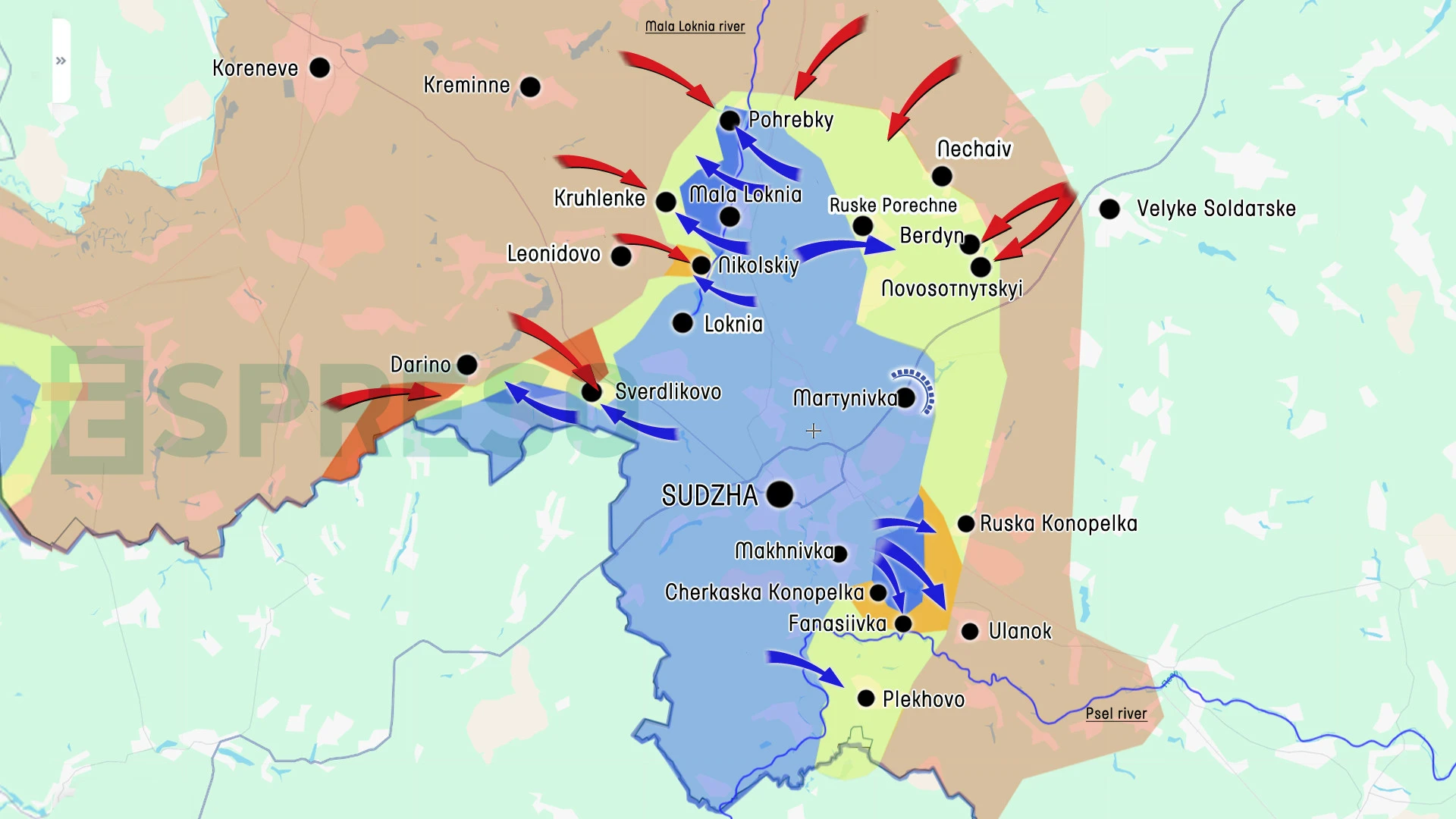
Ukraine Russia war live map, February 5-12, Photo: Espreso
On the other hand, we see that Russia's 155th Marine Brigade, which carried out these attacks, will likely continue such assaults, trying to execute senseless orders from their command — to break through minefields under the protection of Ukraine's artillery. The Ukrainian Defense Forces destroyed Russian tanks near the village of Nikolskiy, which is located between Sverdlikovo and Mala Loknya.
Velyka Novosilka
However, there was pressure and waves of attacks by Russian forces on other sections where they managed to achieve certain tactical successes. I want to mention Velyka Novosilka. Using three waves of attacks, armored vehicles, and manpower, the Russian army advanced beyond the boundaries of Velyka Novosilka. They carried out attacks toward Novosilka and Novyi Komar in an attempt to expand their zone of presence.
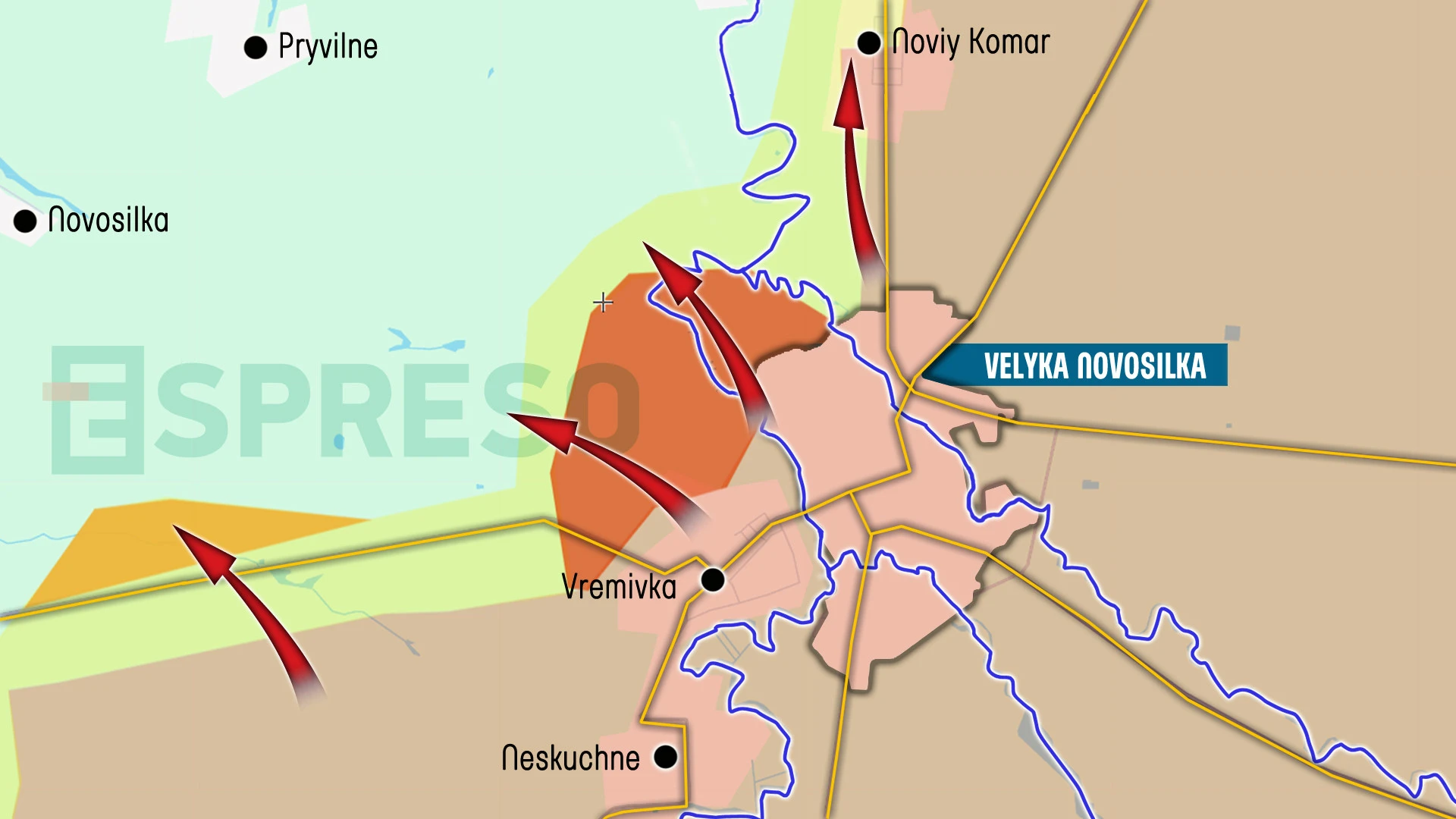
Ukraine Russia war live map, February 5-12, Photo: Espreso
Russian forces have been — and continue to be — held back by Ukraine's 110th Separate Mechanized Brigade. Here, too, Russia advances using predictable tactics: a tank leads the way, followed by armored vehicles. The tank is protected by mine trawls and electronic warfare systems. It detonates multiple mines — at least six times — yet continues moving until a final explosion disables it. Afterward, Ukraine’s artillery and cluster munitions target enemy forces in the area. Despite these losses, Russia maintains certain positions within Novyi Komar and Novosilka. Currently, the 10th Brigade is carrying out a clearing operation in these areas, utilizing available forces and resources.
Kurakhove direction
The most difficult situation over the weekend was on the Kurakhove bridgehead, or rather in the Kurakhove pocket, where Russian forces launched attacks from several directions: from the settlement of Dachne, from Andriivka, and in Andriivka itself. The invading Russian forces also attempted to push towards the road between Dachne and Zaporizhzhia, attacking from Zelenivka towards Ulakly and Kostiantynopil, which are located along the road from Dachne. Russia has secured positions in Ulakly, almost reaching the road.
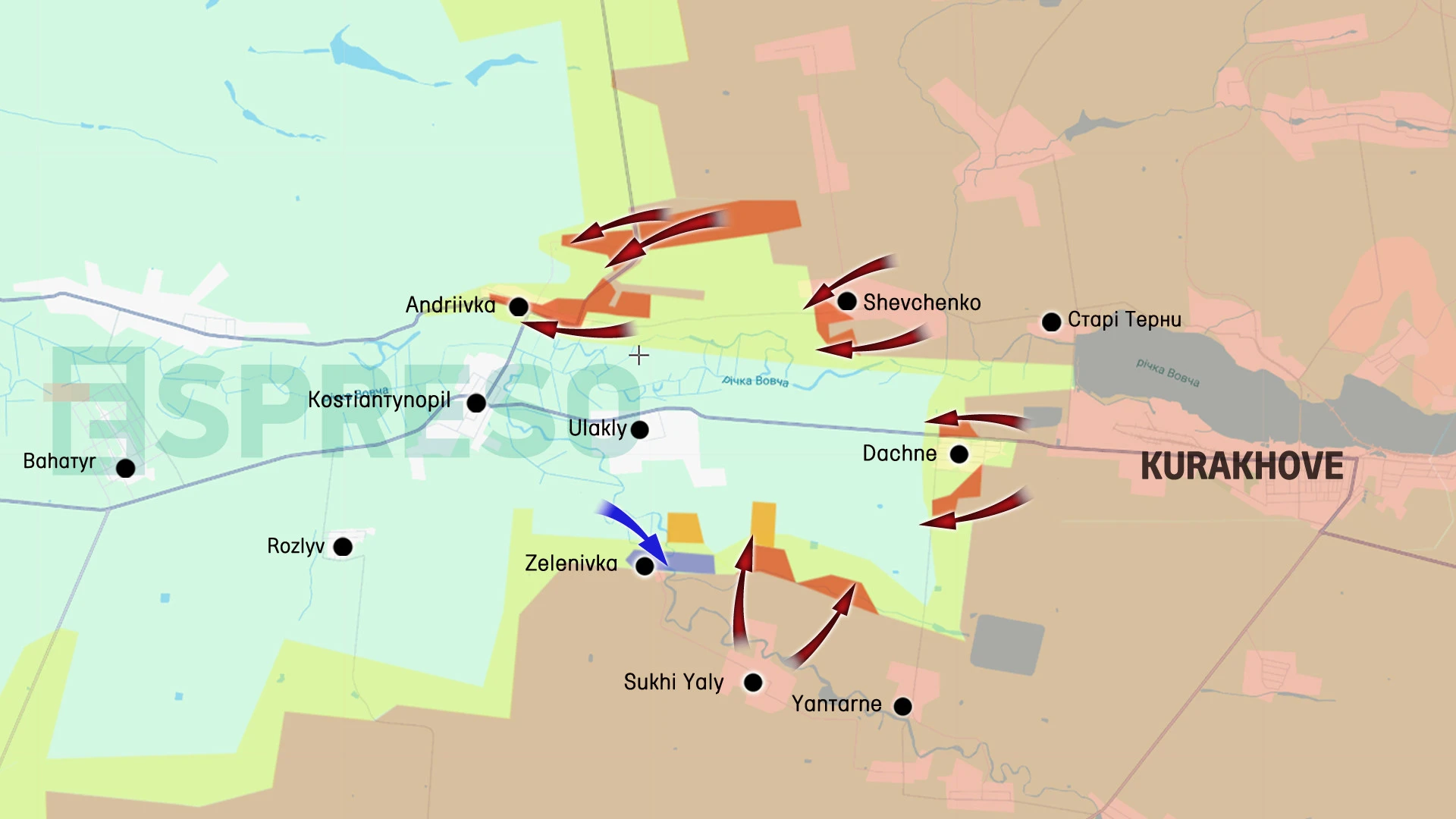
Ukraine Russia war live map, February 5-12, Photo: Espreso
Ukraine's General Staff reported that counteroffensive operations are underway to push Russian troops out of the area. However, the geography, layout, and shape of this bridgehead suggest that Ukrainian forces must navigate an extremely challenging and tense position, with Russian troops attempting to advance from multiple directions. Despite this, Ukrainian forces have largely contained Russia’s progress for an extended period. However, after the weekend, the risk of Russian movement toward Kostiantynopil and their potential entrenchment in Ulakly poses significant threats.
I hope that a certain solution to this situation will be found. I believe that the issue of a planned, organized withdrawal of Ukraine's troops is on the agenda. However, the command on the ground fully understands the overall situation, and I think there is coordination with higher leadership to develop the best approaches for troop withdrawal.
Overall, this past weekend was extremely tense. Again, there were twice as many attacks on Saturday as on Sunday. We will see what the outcome of this day will be. We understand that all these Russian offensive actions are partly linked to the diplomatic-political chaos surrounding the statement from the American side. Russia is now trying to advance as much as possible, using their advantage in manpower and equipment. However, in reality, this advance is minimal, though still dangerous in certain directions — namely, in Kurakhove and around Velyka Novosilka.
Pokrovsk direction
At the same time, we understand that there are other directions where the Russian army is being held back, particularly in the Pokrovsk direction. On February 16, spokespersons confirmed that Russian troops were pushed out of Pishchane, and a clearing operation is currently underway in this settlement. This is an important area in terms of complicating Russian logistics. Currently, the invading troops are attempting a flanking advance around Pokrovsk.
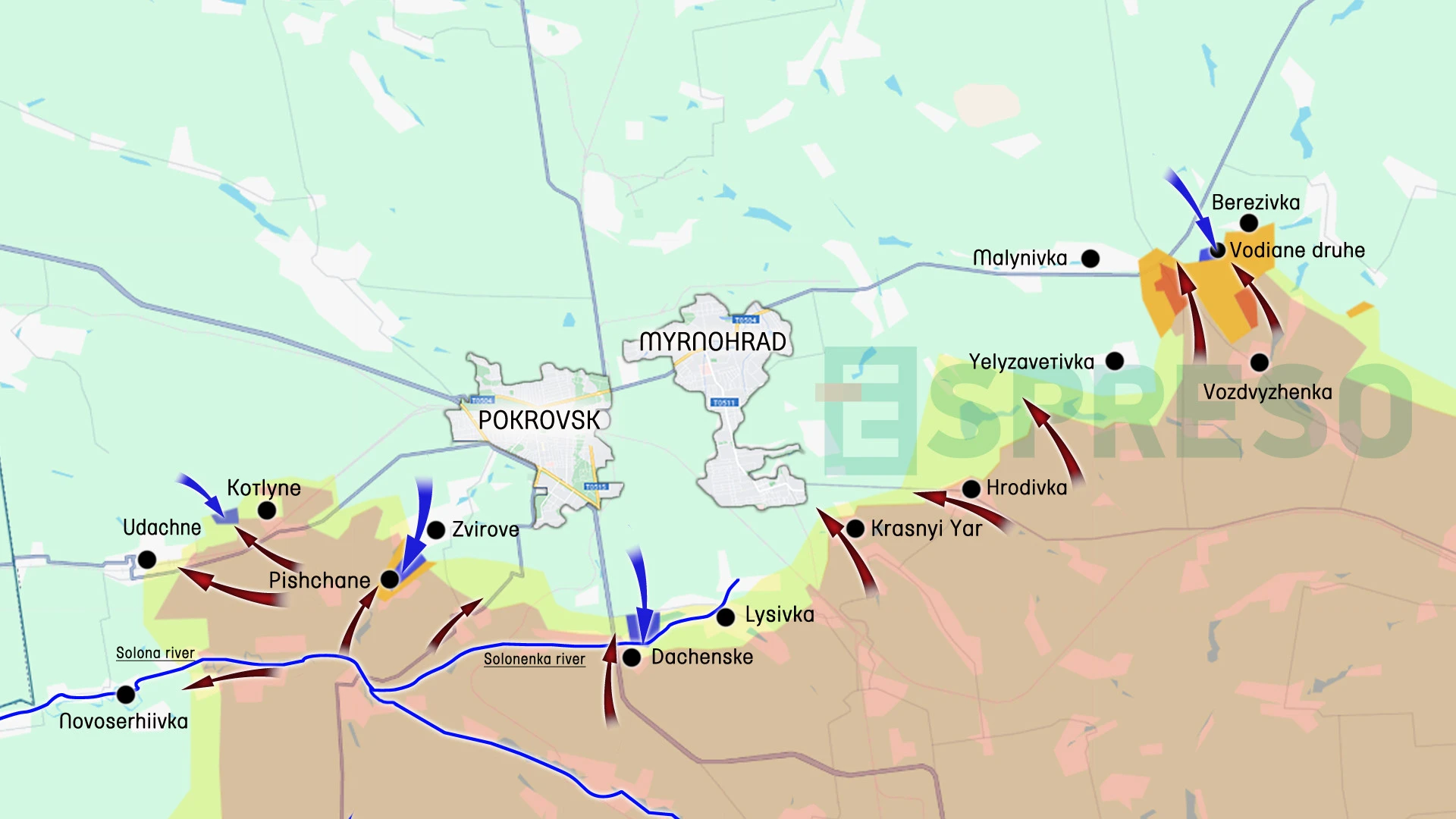
Ukraine Russia war live map, February 5-12, Photo: Espreso
Major Ihor Shafihulin, deputy commander of the 1st Artillery Battalion of the 3rd Spartan Brigade of the National Guard of Ukraine, operating in the Pokrovsk direction, reported that in his brigade’s area of responsibility, Russia operates in small and medium-sized groups. During worsening weather conditions, they try to concentrate forces for assault actions. Additionally, they use vehicles, including Zhiguli cars, buggies, and motorcycles for movement, and in some cases, armored personnel carriers. They typically attack in small groups of 3-5 soldiers. Ukrainian defenders detect Russian troops even before they approach positions and eliminate them.
The major noted that new types of weapons are now arriving for the Ukrainian Defense Forces. Counter-battery warfare is a complex set of measures, with its main task being to suppress Russia's firepower against Ukraine's positions. Accordingly, Ukrainian defenders use both radar stations and drone systems. At this moment, Ukrainian troops have weapon systems that surpass Soviet-era models in range and accuracy.
The major also spoke about the Czech DITA self-propelled artillery unit (SAU) — a cutting-edge development with a more automated targeting and loading system, allowing for a smaller crew. This SAU is a more precise weapon, proving its effectiveness on the battlefield in counter-battery warfare and against enemy manpower. DITA is 80% automated: artillerymen only need to arrive at a designated location, align in the correct direction, enter the target coordinates, and the computer does the rest.
Shafihulin also mentioned the issue of countering enemy fiber-optic drones. Ideas and solutions are being discussed, but for now, this issue is addressed using standard rifles. In the Pokrovsk direction, Russia does not use fiber-optic drones in large numbers because, first, they do not have many of them, and second, experienced pilots capable of operating them are scarce among Russian troops. The use of Lancet drones in this area has also decreased, with Russian troops primarily deploying FPV cruise-type drones Molniya-1 and Molniya-2. Therefore, Ukrainian soldiers need to camouflage well and make their positions less visible to remain undetected for as long as possible.
- News






